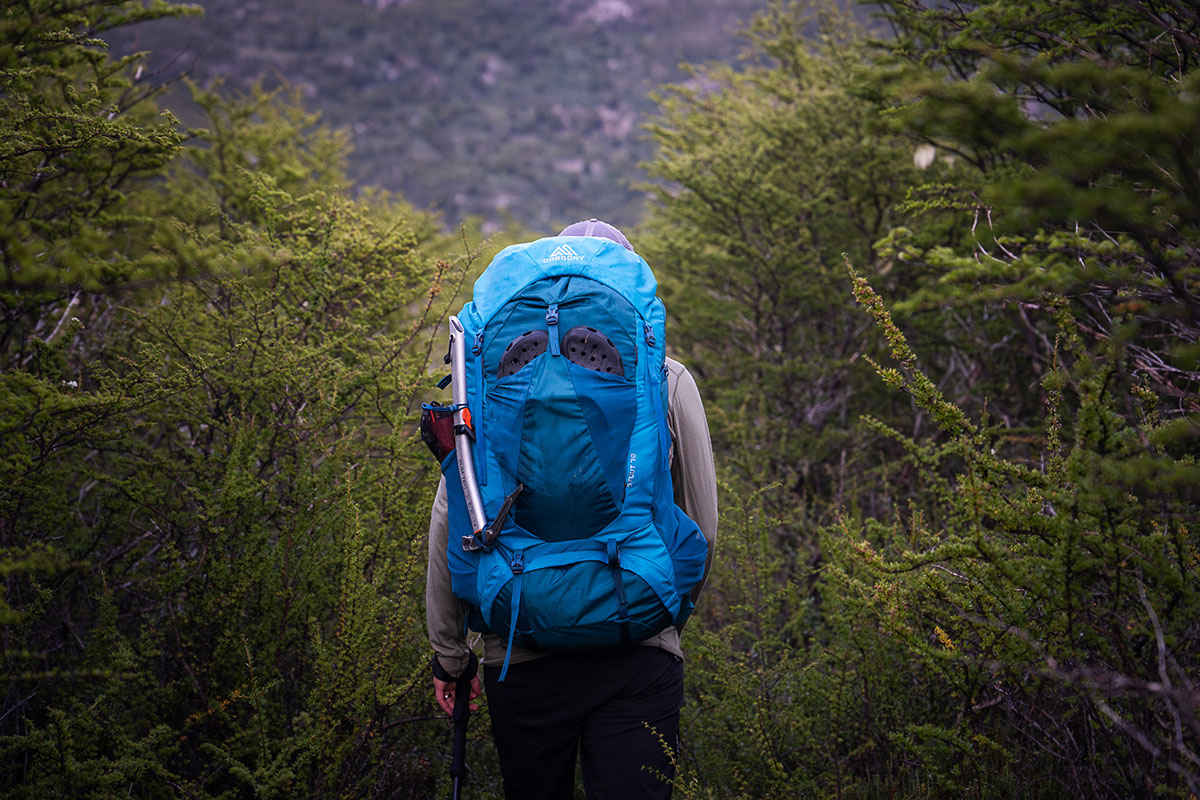
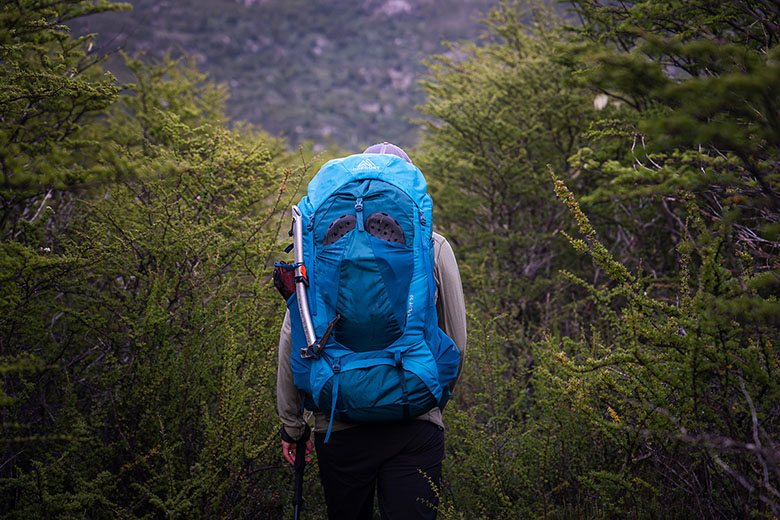
Price: $240
Weight: 3 lb. 9.6 oz.
Capacities: 35, 45, 55, 70L
What we like: An impressively capable heavy hauler for the price.
What we don’t: Carrying comfort is good but not great; not the most refined design.
See the Men's Gregory Stout 70 See the Women's Gregory Amber 68
Gregory has been in the pack-making game for almost 50 years and covers the whole gamut of backpacking designs, from ultralight models for staunch minimalists to burly heavy haulers for shuttling serious weight. The aptly named Stout 70 falls into the latter category, offering solid carrying capabilities in a tough and spacious package. Spending up will get you better all-day comfort and added organizational features, and the Stout’s one-size-fits-all design won’t work for some, but it’s an impressively capable pack for the price. Below we outline our experiences with the Stout 70. To see how it stacks up to the competition, check out our article on the best backpacking backpacks.
Carrying comfort is the biggest factor for many backpackers, and the Gregory Stout 70 scores good but not great marks. On the bright side, the shoulder straps and hipbelt are nicely padded, and the suspension system was supportive enough to handle around 40 pounds’ worth of food, gear, and camera equipment during a five-day trek in Chilean Patagonia (it’s rated to 50 lb.). Finally, the torso and hipbelt adjustment systems made it easy to dial in a good all-around fit (more in “Fit and Sizing” below).
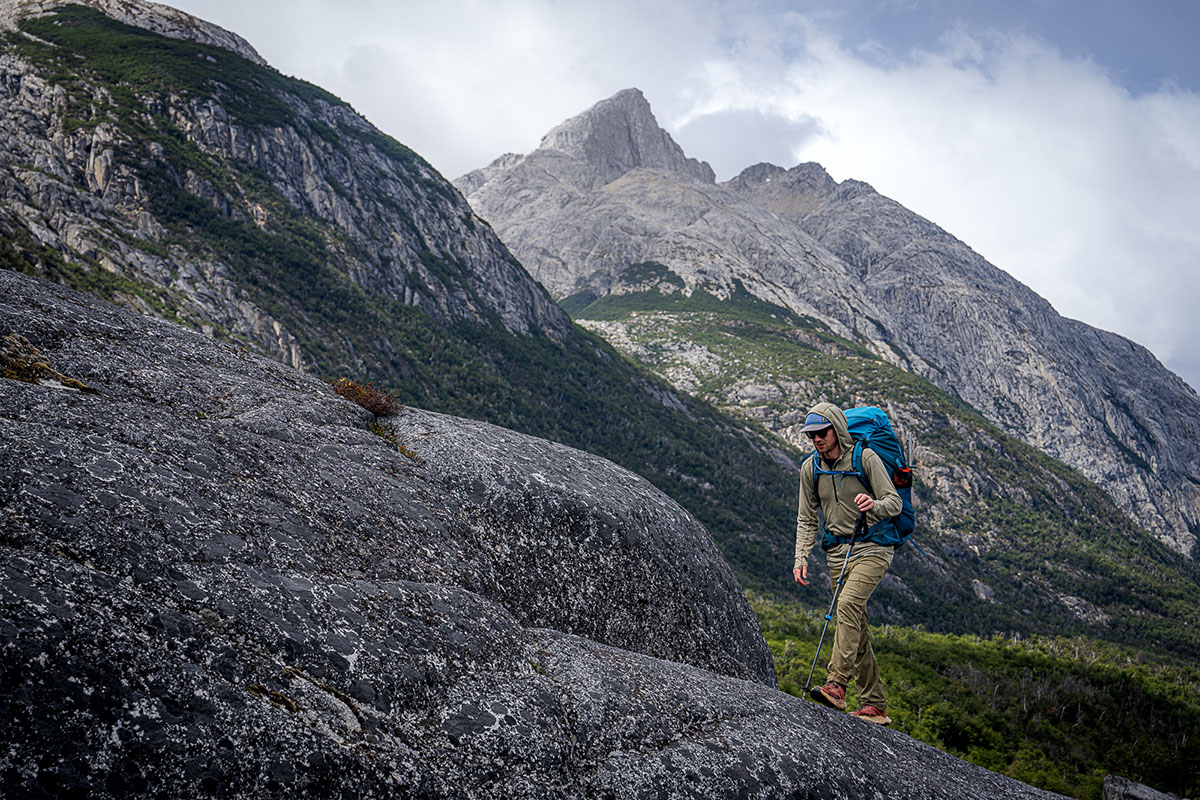
However, when I swapped packs with our photographer, who was using Osprey’s high-end Aether Pro, the difference in carrying comfort was noticeable. Specifically, the Aether stayed much closer to my back when scrambling and navigating tricky terrain. By comparison, the Stout was more prone to shifting and bouncing around, causing me to lose balance on occasion. And while the Gregory’s padding is up to par, the Osprey’s premium foam caused fewer sore spots as the miles added up. In other words, you get what you pay for, and the Stout—while fully serviceable for most backpackers and terrain—falls short of pricier and more premium packs.
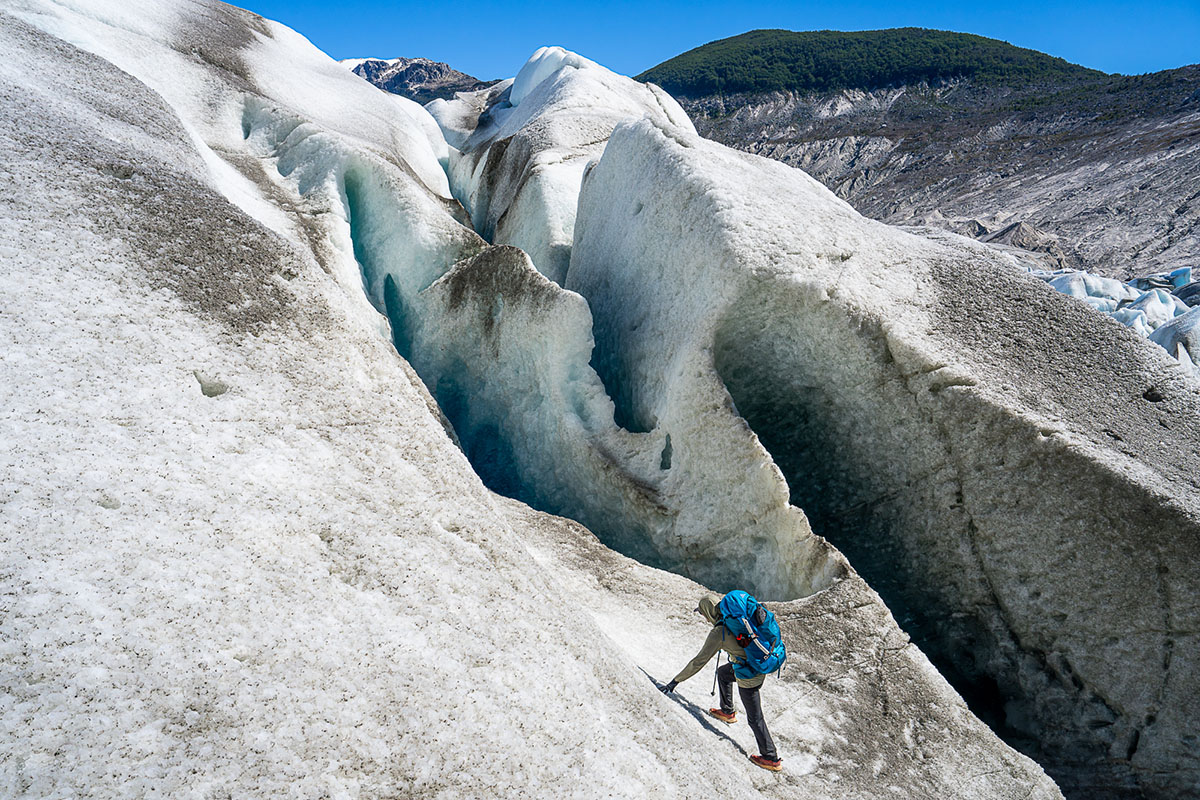
At 3 pounds 9.6 ounces, the Stout 70 is no featherweight but considerably undercuts most other heavy haulers. For comparison, it’s significantly lighter than our favorite pack in this category, Gregory’s own Baltoro 75 (5 lb. in a size medium), while stacking up competitively to other similarly intentioned designs like REI’s Traverse 60 (4 lb. 4 oz. for a medium) and Osprey’s Aether 65 (4 lb. 14.7 oz. for the S/M size). Of course, there are plenty of lighter options available—including a growing cohort of ultralight packs that clock in under 2 pounds—but the Stout never felt overly cumbersome on the trail. It even weighs less than all-rounders like Osprey’s popular Atmos AG 65 (4 lb. 12.8 oz.), although that pack comes with notable upgrades in carrying comfort, ventilation, and features.
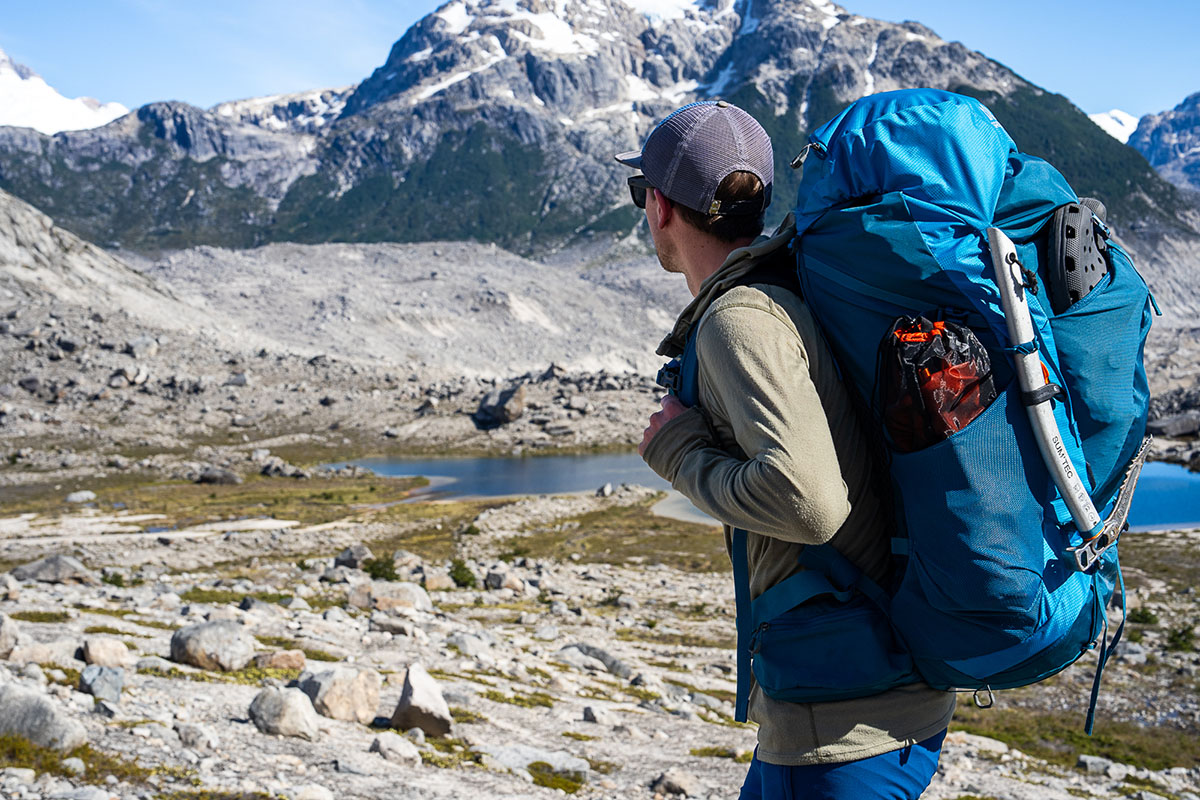
The Stout 70 isn’t the most well-appointed pack but checks most of the boxes. Starting at the top, the lid has roomy pockets both above and underneath, which I always appreciate for separating essentials that I want close at hand (like sunscreen and snacks) above important items that I don’t need quick access to (like my wallet and passport) on the underside. The Stout’s hipbelt pockets (which aren’t a requisite feature in the budget market) are also decently sized—I stashed my phone in one and sunglasses plus a small snack in the other. Dual water bottle pockets flank the sides and boast two access points. In use, I found them great for bottles or even a backpacking chair, although you’ll want to avoid stashing small items here, as the lower opening creates a gap for them to fall out. Rounding out the pocket layout is a front mesh pocket that easily swallowed my Crocs, wet clothing, and a rain shell. Finally, an ice axe loop and compression straps make it easy to attach gear externally.
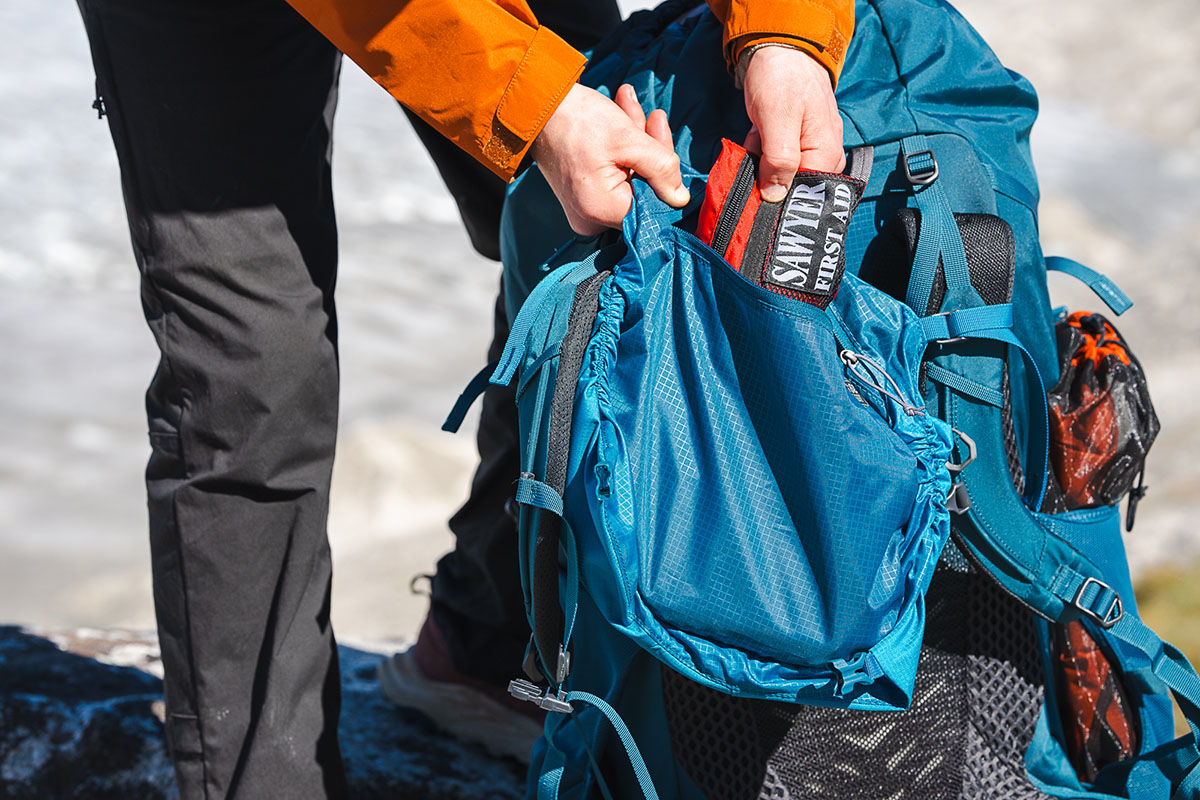
The only notable omission for me was secondary access to the main compartment, which can be invaluable for grabbing hard-to-reach items without having to rifle through all of your belongings. On the plus side, Gregory did include a zippered sleeping bag compartment with a removable divider at the bottom of the pack, which you can realistically use for any gear you’d like to keep separate and easily accessible. Personally, I’d trade that opening for zippered front access (like what you get with Gregory’s pricier Baltoro), but it’s not a huge compromise for a budget design.
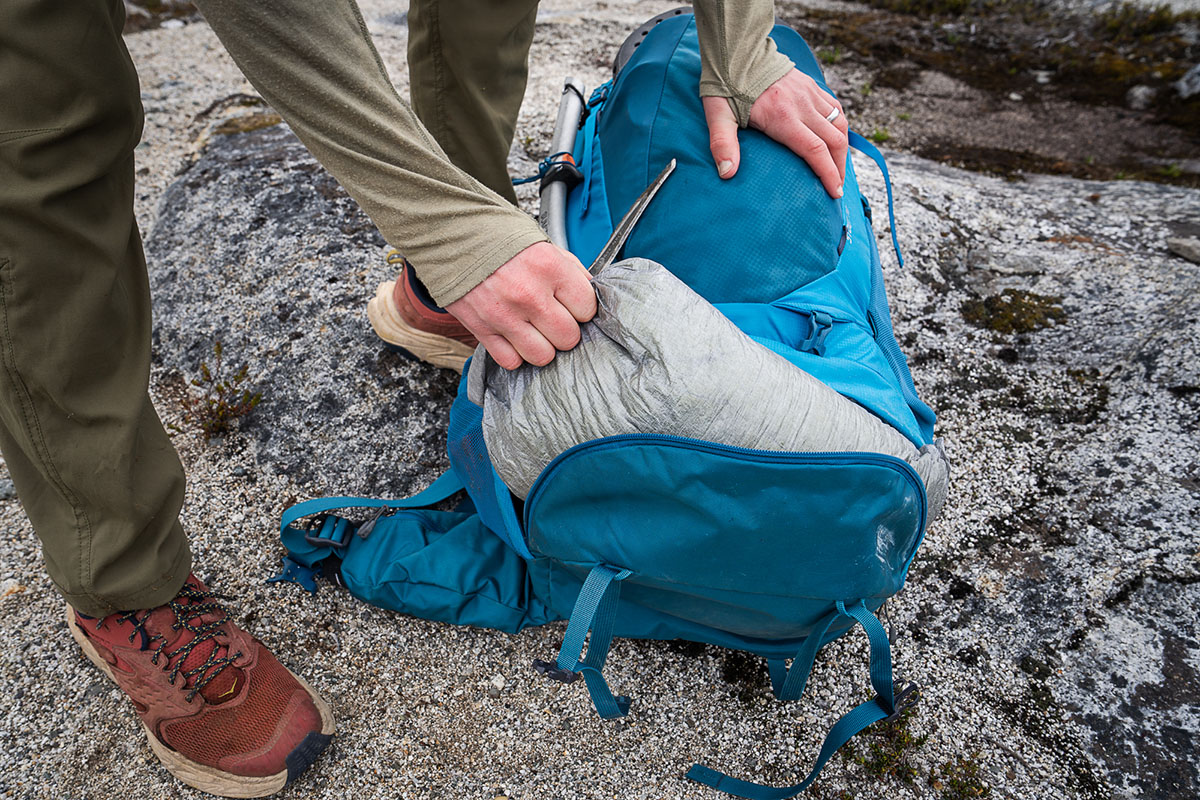
Similar to carrying comfort, I’d describe the Gregory Stout 70’s ventilation as average. The backpanel features cutouts in the foam, with mesh covering most of the middle to help keep air moving. In use, the pack kept me reasonably comfortable in temperatures that reached into the 80s Fahrenheit in Patagonia, but those who run warm or exclusively head out in the summer may want to consider a suspended mesh design (like what you get with Osprey’s Atmos/Aura AG collection) that keeps the pack farther off your back.
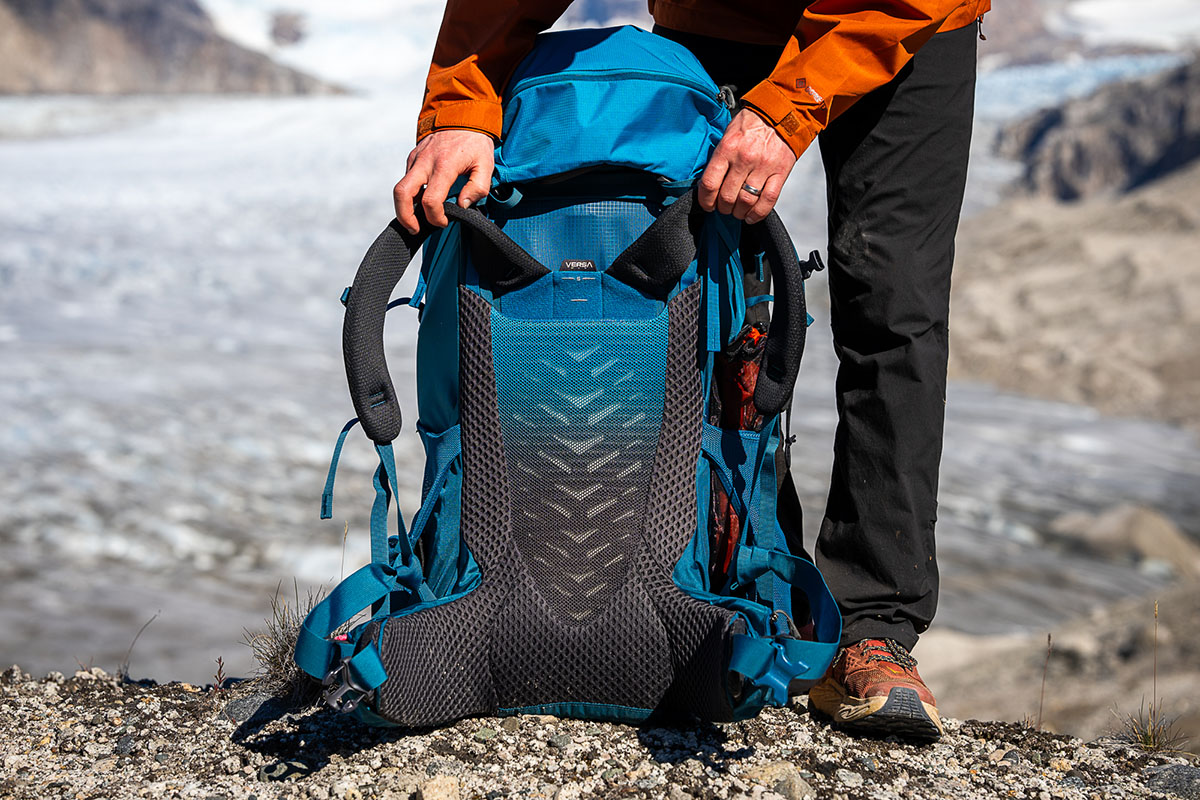
In short, the Stout 70 offers little in the way of weather protection. The pack’s body, base, and lining are all coated with a durable water repellent (DWR) finish, which will help fend off light moisture, but there’s no rain cover or additional waterproofing measures. We admittedly didn’t experience any inclement weather during our five-day trek in Patagonia, but if rain is in the forecast, I’d recommend waterproofing your gear (a pack liner or garbage back will work) or purchasing a rain cover separately (Gregory sells a compatible one for $40).
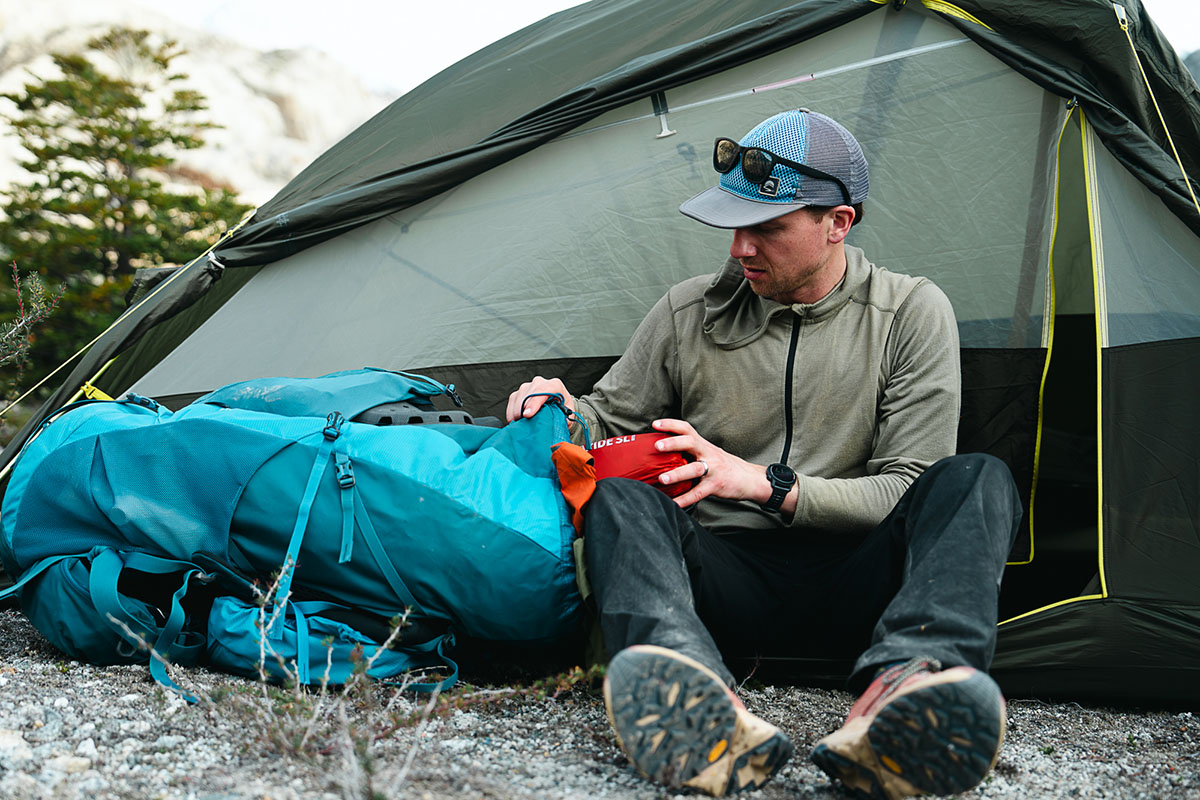
The aptly named Stout 70 is an impressively durable heavy hauler—great for folks who are hard on their gear. The body of the pack uses a mix of 210- and 420-denier (D) nylon, while the base uses exclusively 420D—both of which have held up flawlessly to hours-long bushwhacking and scraping up against granite and other abrasive surfaces. All of the smaller components (e.g., buckles and webbing) are faring equally well with no noticeable signs of wear after very rough use. All told, it’s a very confidence-inspiring and hardwearing design that should last many seasons.
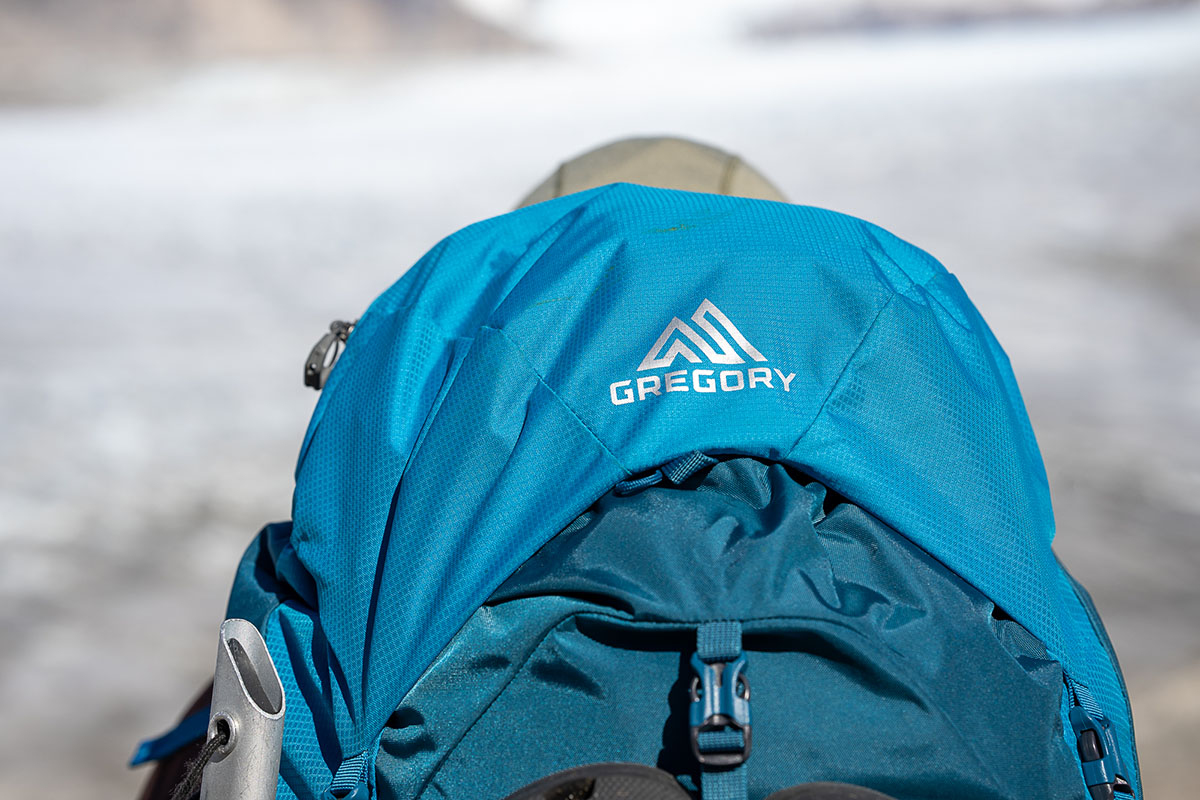
The Stout is only offered in a single size, which thankfully worked well for me. In practice, it was easy to dial in the torso length (which fits torsos between 16 and 21 in.) via the Velcro-style shoulder strap adjustments, and the hipbelt features a similar rip-and-stick design for tailoring fit (it’s adjustable between 28 and 48 in.). All told, it was an effective system that allowed me to achieve a reasonably comfortable and secure fit. Of note: Gregory also offers the Stout 70 in a dedicated plus-size version, which features an extended hipbelt (39-60 in.) and shoulder straps.
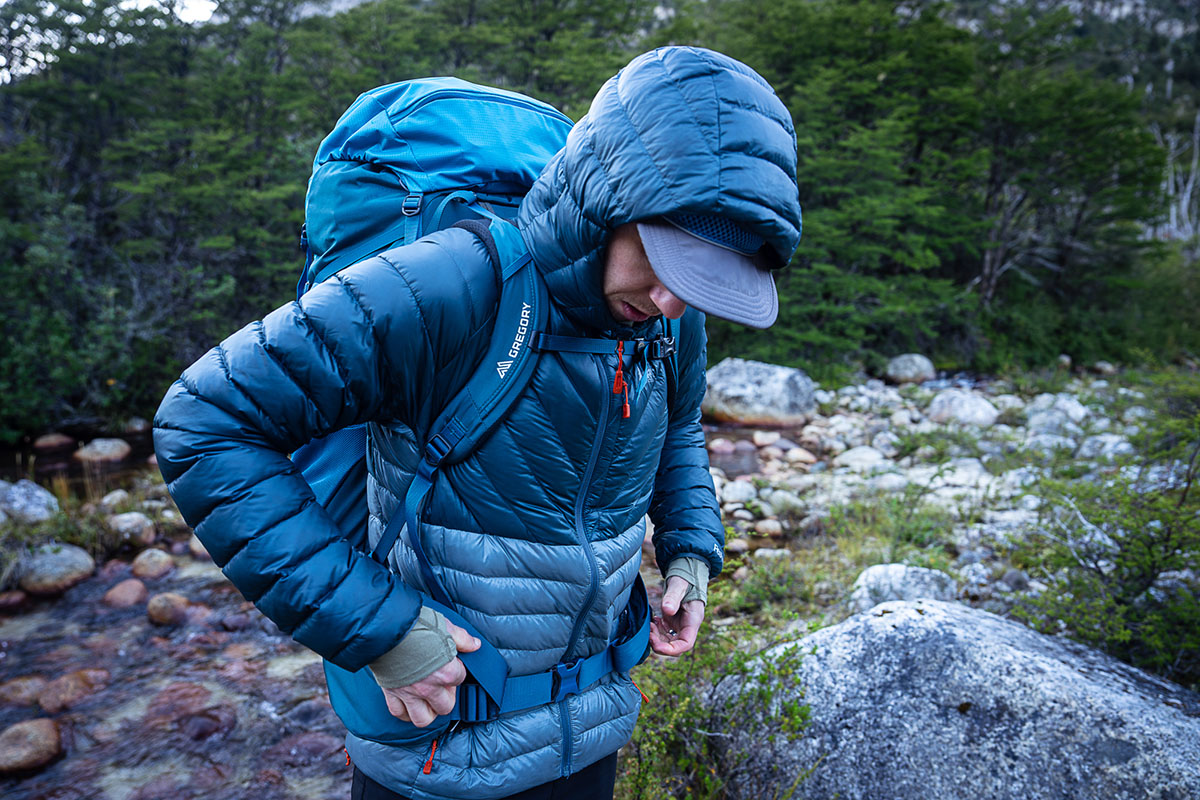
Like many leading pack manufacturers, Gregory has started employing more sustainable production practices to reduce their environmental impact. In this case, the Stout 70 uses recycled materials for the body (40% recycled nylon) and lining (40% recycled polyester). It also utilizes PFAS-free DWR coatings on the body, bottom, and lining, which forgo the use of harmful per- and polyfluorinated substances—“forever chemicals” known to be harmful to the environment. Added up, we appreciate Gregory’s ongoing sustainability focus and hope to see them continue the trend with future updates to the collection.
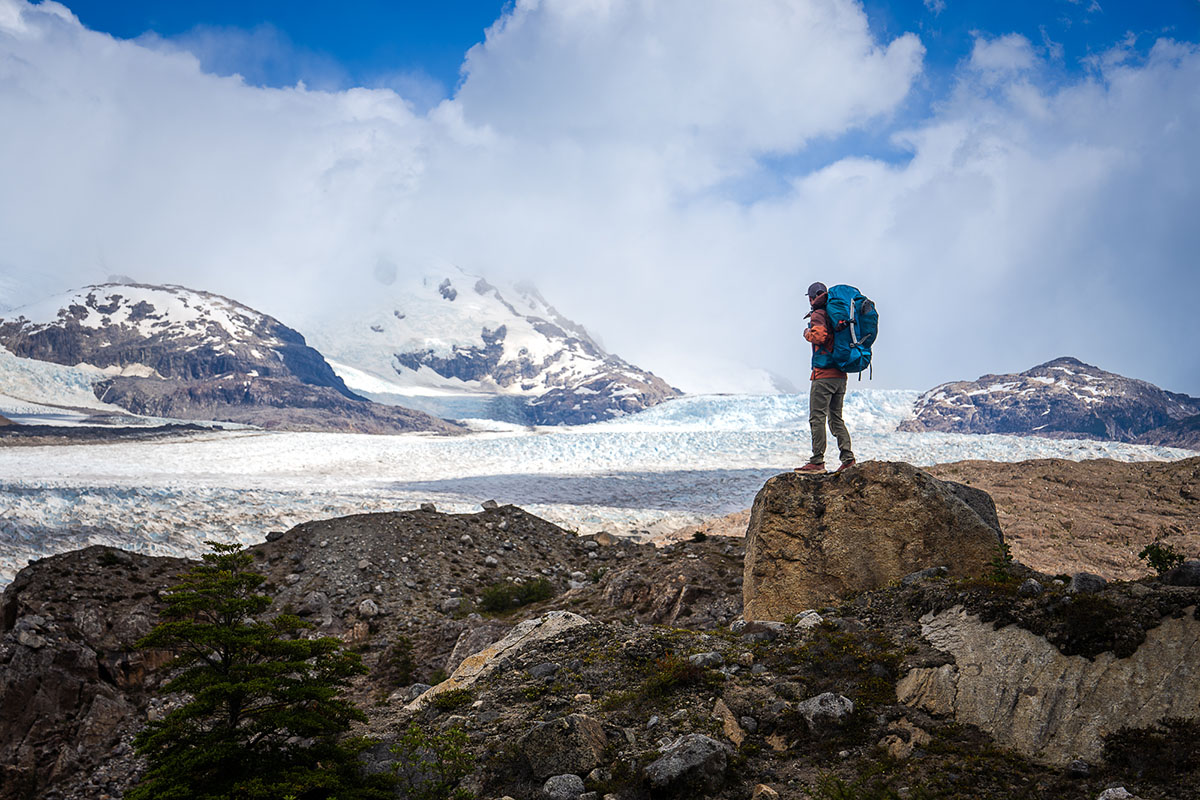
We tested the Stout 70 for this review, and it’s also offered in 35, 45, and 55-liter capacities. All four variations share the same overall construction, with the primary differences being weight and price. On the women’s side, the Amber is the Stout’s counterpart and shares a largely identical design and feature set. However, the Amber packs are offered in smaller capacities (34, 44, 54, and 68L), with the Amber 68 clocking in at 3 pounds 8 ounces. Similar to the Stout, the Amber also comes in dedicated plus sizes for the 44- and 68-liter versions.
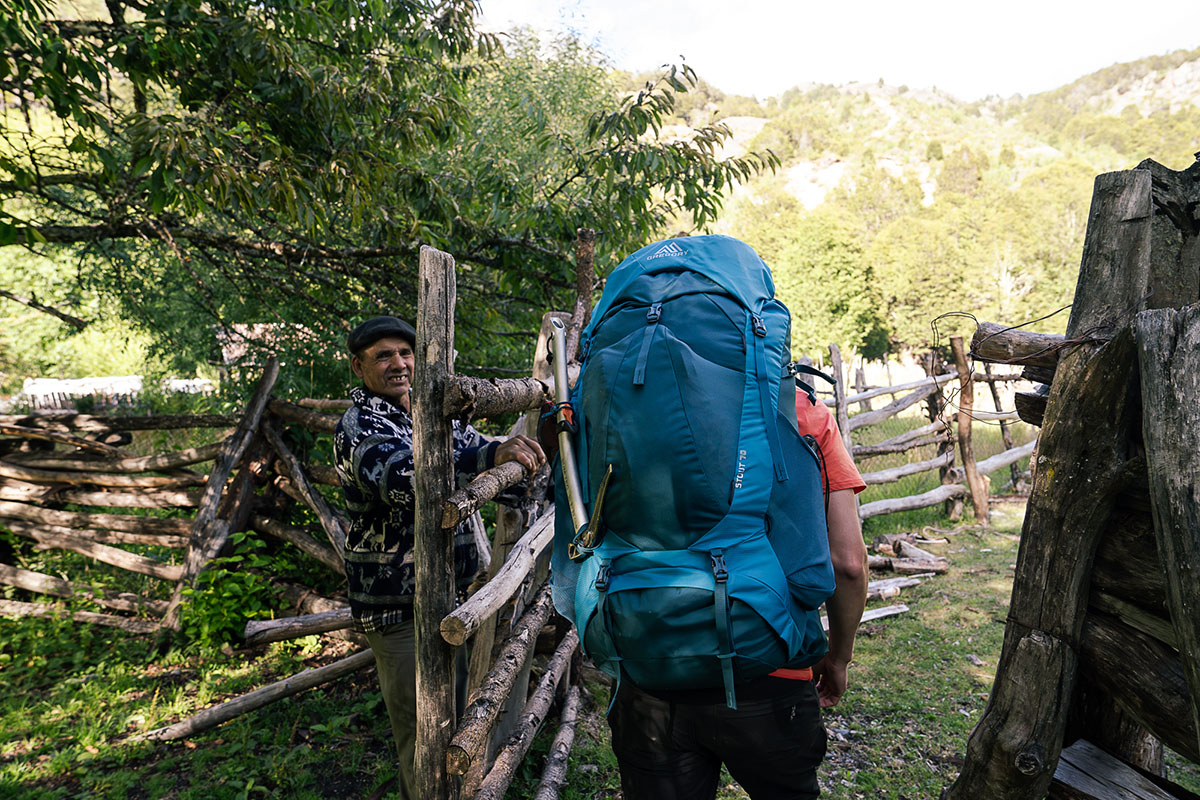
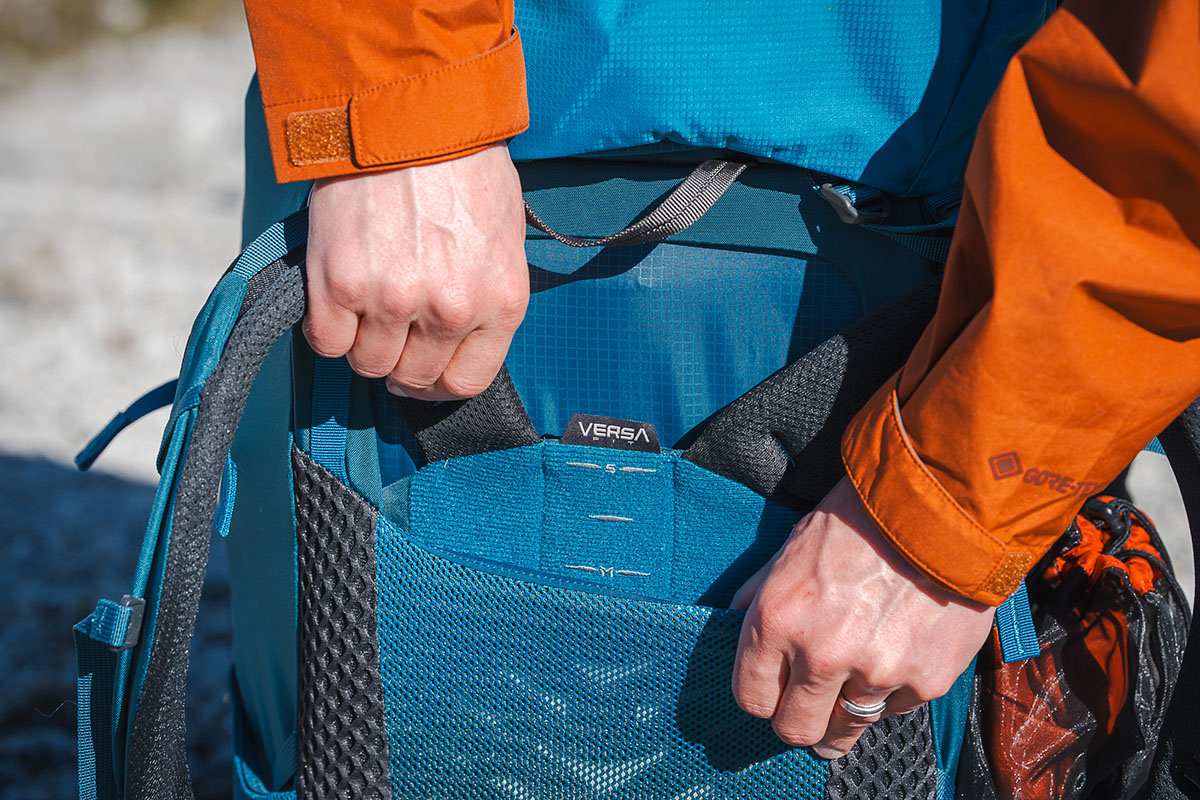
| Pack | Price | Weight | Fabric | Capacities | Access | Pockets |
|---|---|---|---|---|---|---|
| Gregory Stout 70 | $240 | 3 lb. 9.6 oz. | Nylon (210D & 420D) | 35, 45, 55, 70L | Top | 5 exterior |
| Gregory Baltoro 75 | $360 | 5 lb. | Nylon (210D & 420D) | 65, 75L | Top, front | 9 exterior |
| Gregory Paragon 68 | $280 | 3 lb. 8 oz. | Nylon (100D & 210D) | 48, 58, 68L | Top, side | 6 exterior |
| REI Co-op Traverse 60 | $259 | 4 lb. 4 oz. | Nylon (300D) | 32, 60L | Top | 10 exterior |
| Deuter Aircontact Core | $250 | 4 lb. 15.4 oz. | Nylon (235D & 500D) | 50+, 65+L | Top, front | 6 exterior |
The Stout 70 is a capable and affordably priced heavy hauler, but it falls short of premium backpacking packs in a few areas. If you’ve got the budget to spend up, Gregory’s own Baltoro 75 is our favorite workhorse design this year and comes with several upgrades. First is carrying comfort: While both packs can shuttle serious weight, the Baltoro’s premium suspension system and auto-rotating shoulder straps give it a more secure and bounce-free fit, and the straps feature plusher and more supportive padding. The Baltoro also gets the edge in organization with nine exterior pockets (the Stout has five) and U-shaped front access to the main compartment. You do pay a sizable weight penalty at 5 pounds for the medium size, but the Baltoro leaves little to be desired for comfort-focused backpackers who plan to regularly carry 40-plus pounds.
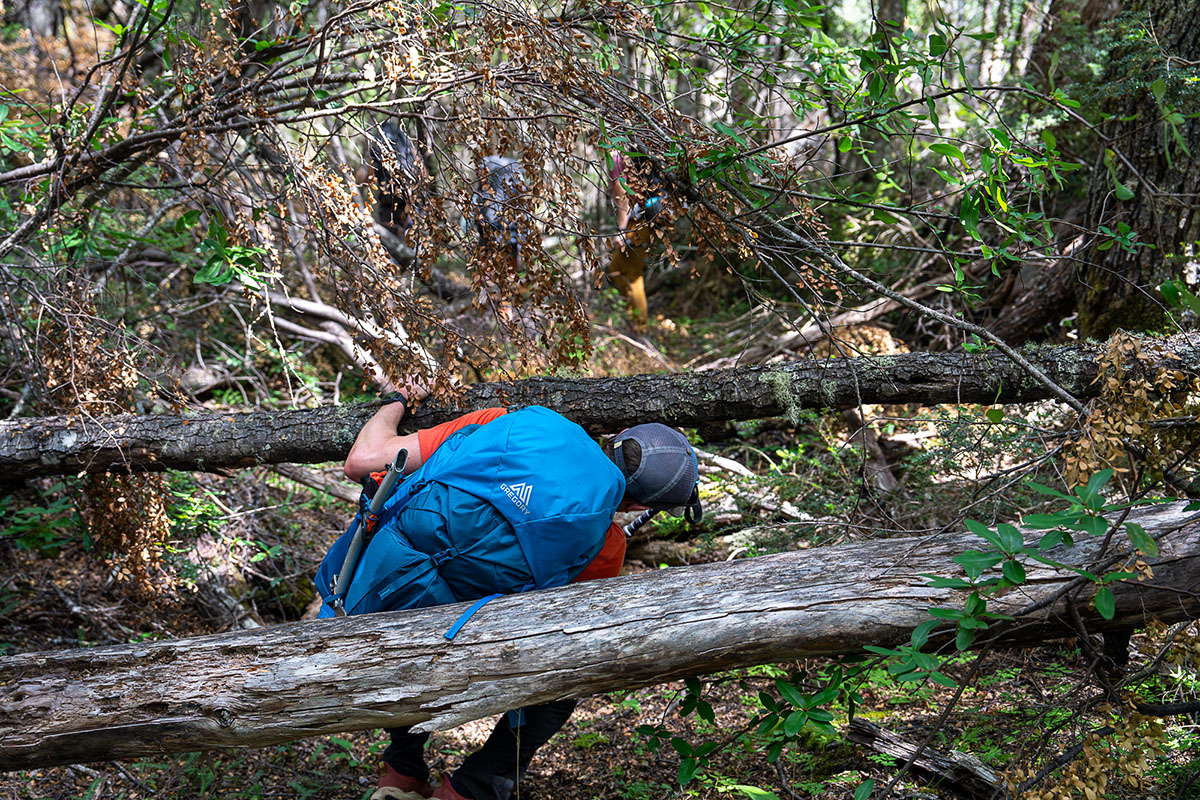
Next up is another in-house alternative to consider: Gregory’s Paragon 68. For $40 more than the Stout, the Paragon comes with useful additions like an included rain cover, a side zipper to access the main compartment, and the brand’s FreeFloat suspension system that offers better airflow. Importantly, the Paragon manages to pull it off while remaining competitively light (3 lb. 8 oz. for the SM/MD size), although the pack’s 100D body won’t stand up as well as the Stout’s 420D exterior over the long term—especially if you spend a lot of time off-trail. If you don’t mind that drawback, we consider the Paragon the superior all-rounder and still a solid value at $280.
REI Co-op is another value leader, and their competitor to the Stout is the Traverse 60. For $20 more than the Gregory, you get thoughtful features including a top lid that converts into a day pack and an included rain cover (both of which the Stout lacks). We also like REI’s Packmod compression straps and daisy chain system that allows you to customize external organization, as well as the option to choose between four sizes. However, despite costing a little more (for less capacity), the Traverse feels noticeably cheaper than the Stout, with raised foam padding along the backpanel that detracts from carrying comfort and ventilation. In the end, we feel it’s an easy call: Unless the Stout’s one-size-fits-all design doesn’t work for you, we consider it the better all-around design and value.
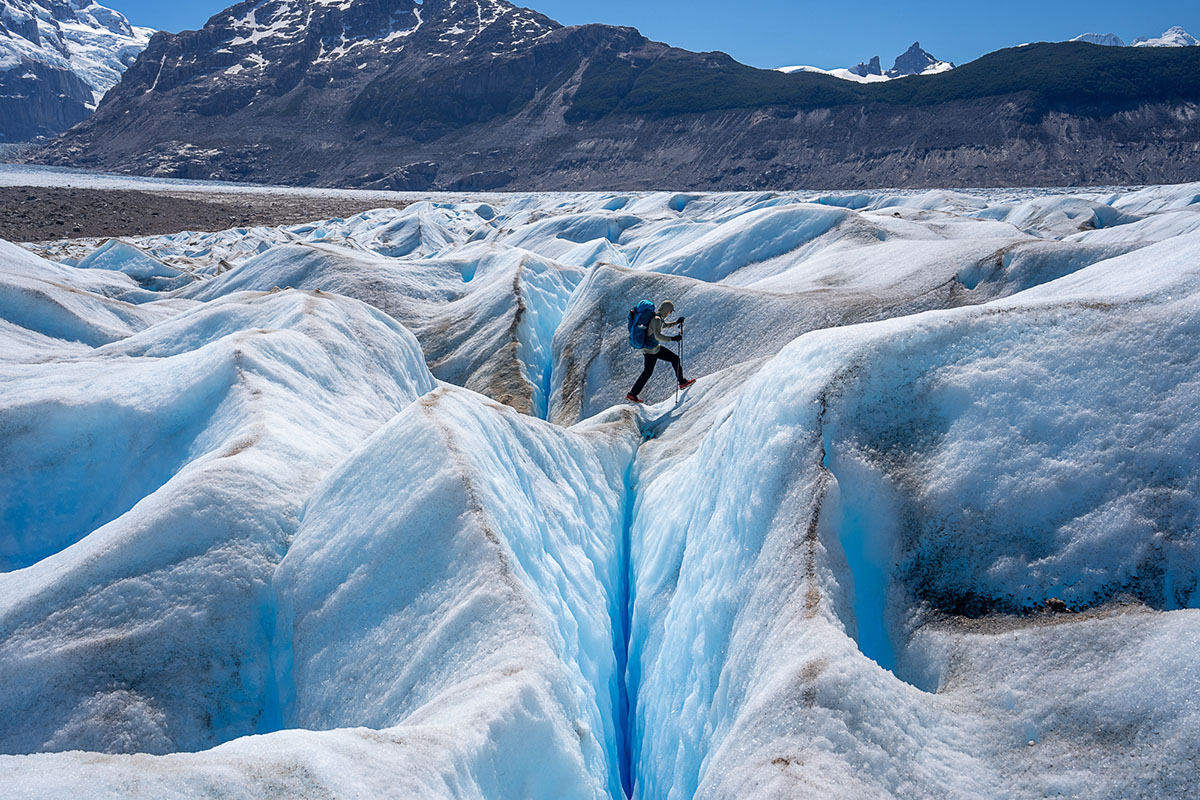
A final option to consider is Deuter’s Aircontact Core 65+10, which is more of an all-rounder than the heavy hauling-focused Stout but stacks up competitively in many metrics. For just $10 more, you get an additional 5 liters of capacity (the “+10” refers to the generously sized and detachable lid), a handy J-shaped zipper to access the main compartment, and a more refined backpanel design that promotes great airflow. However, in addition to weighing considerably more than the Stout at nearly 5 pounds, the Aircontact Core has a slightly lower load limit (44 lb.). Like the Gregory, the Deuter is also only available in a single size, although both packs offer good fit customization (for more, see our in-depth Aircontact Core review). In the end, each pack has its advantages, and a final decision will come down to how you prioritize weight, access, and ventilation.